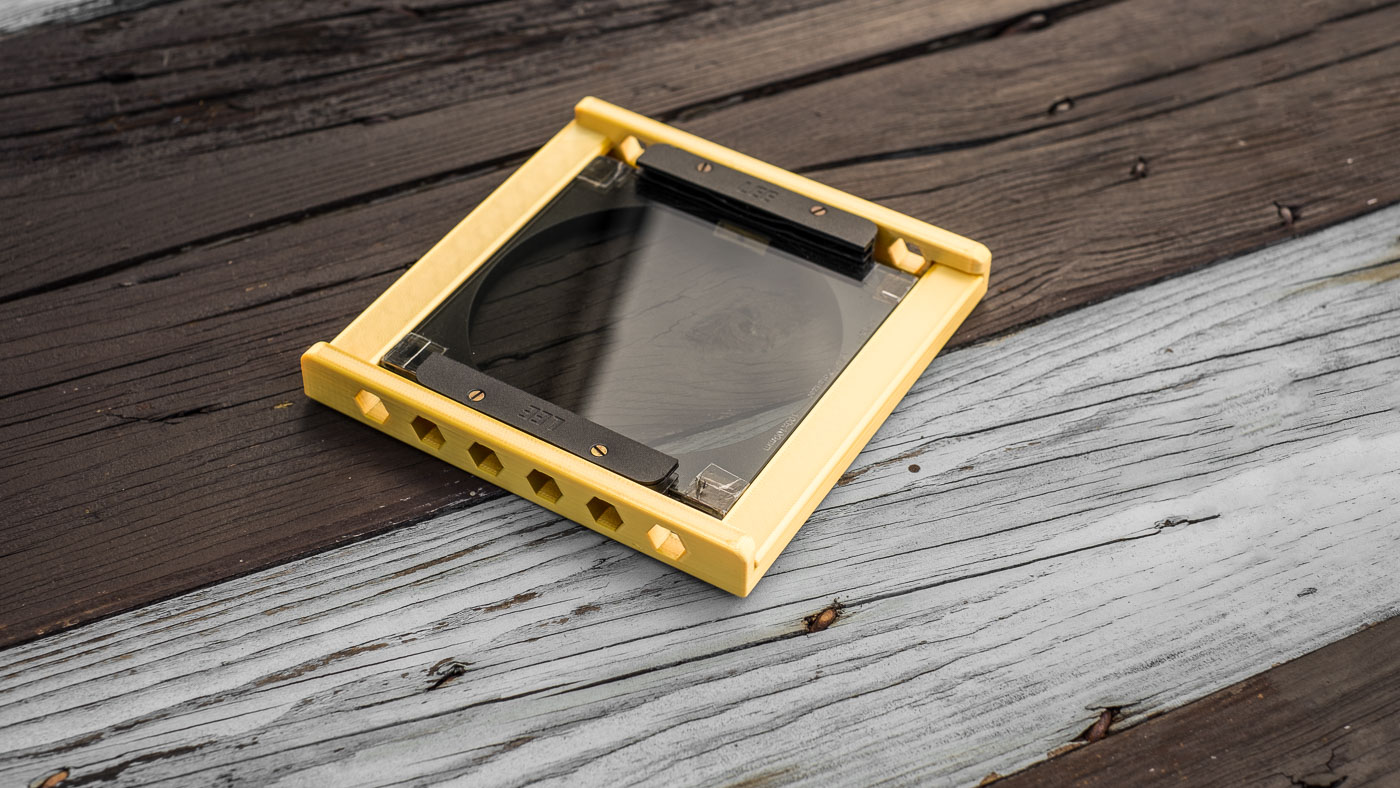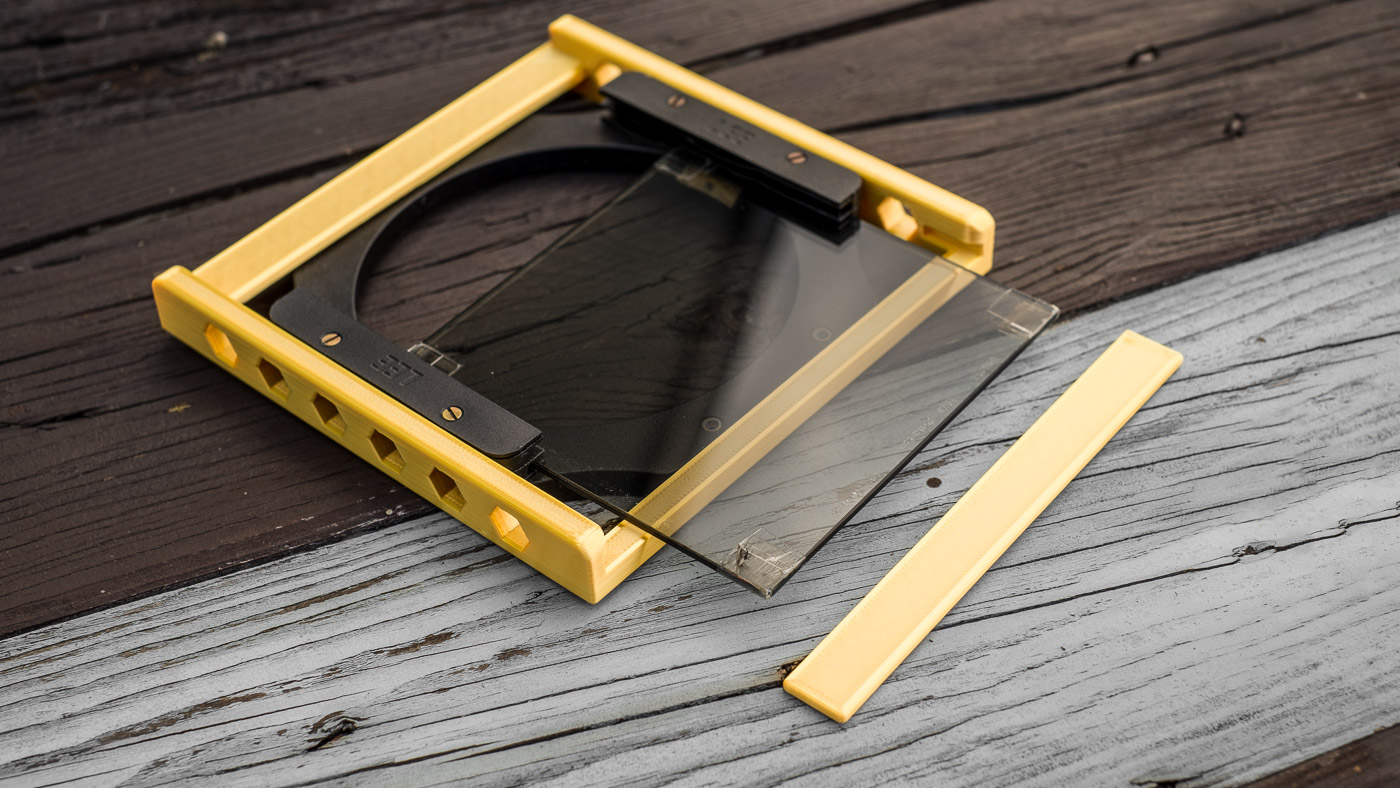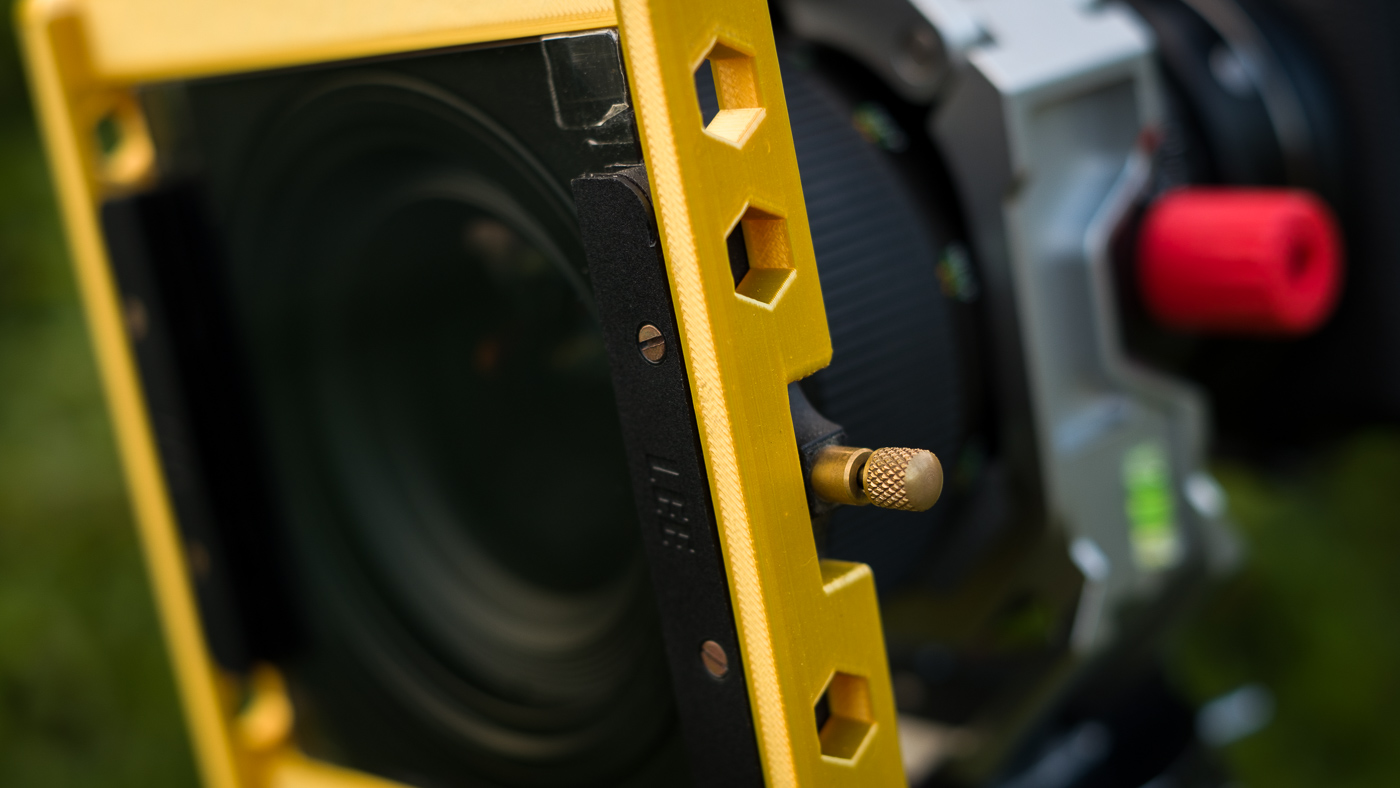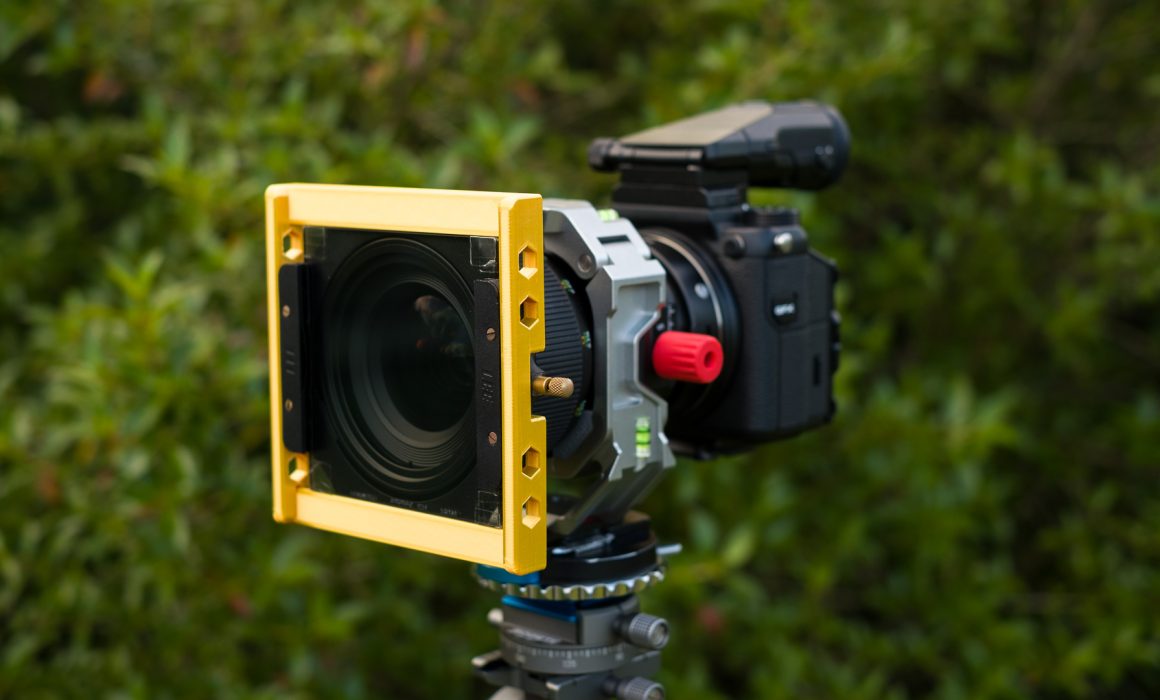Lee Filters 100mm Bumper
Some building materials are shiny, but not in a good way. Whether it is light bouncing off flooring and thus obscuring beautiful wood grain, window reflections that keep me from looking into the heart of a building, or an excess of metallic surfaces that look chaotic with bounced light, sometimes I want the option of turning reflections off. That’s where polarizing filters enter the stage.

First step to solve an expensive problem (at one point i bought up all remaining stock of these filters in the asia-pacific region)
But while some photographers choose to leave their polarizing filters installed at all times, that approach comes with certain risks. Polarizers introduce dark sky-blobs that can be hard to remove, they can highlight otherwise invisible processing marks in tempered glass panels, or simply steal much needed light input in dark interiors. To have the best of both worlds, I often shoot a composition with filter on and off. These rapid changes of filters are not possible with traditional screw-in filters. Rectangular filters popular in landscape photography are therefore the better solution for quick removal, but they come at a price: When fumbling a filter change, and I inevitably will at least once every season, a few hundred units of currency are destroyed in a second.

The reason why dropped filters will almost inevitably break is simple: All rectangular filter holders that I have used over the years leave the corners of square filters dangerously exposed. For landscape photography at least that is with good reason. The landscape crowd tends to use a wide range of different ND filters, which requires easy access to the filter holder.

But what about a one-filter situation like the one I described above? After shattering several very expensive filters, I started having a good look at ways of preventing another accident. I taped the corners of filters, which reduced damage slightly, but ultimately that did little to prevent filters from sliding out of the holder at impact. For a while I hotglued a haphazard bumper cage together from spare bits of plastic. It did a good job of covering the corners but little to prevent slippage during a fall.

After my positive experience designing and 3D printing my own extension knob for Canon TS-E lenses, I once again sat down to design my own solution. The result is simple: The bumper cage slides over a standard Lee 100mm filter holder and secures in place with a few dots of superglue. Once installed, it protects the bottom rail on three sides when open, and on all four sides once the safety tab is placed in its notch. The tab secures with a simple friction fit and is easy enough to remove when changing out the filter (which I never do). The bumper also allows unrestricted access to the top rail, which enables the use of a second 100x100mm or 150x100mm gradient filter. While I never use the second rail for commercial work, others might find it useful. Love or hate the acceleration holes on the sides, I think they look cool and shave a few extra grams off the holder.
Just like the Lightforge TS-E Knobby, the Lee Bumper is free for personal use. You can find 3D files and print instructions on Thingiverse.


